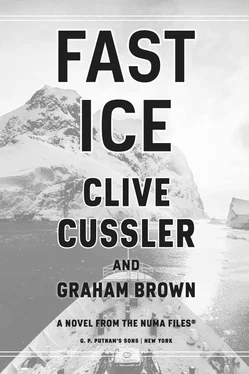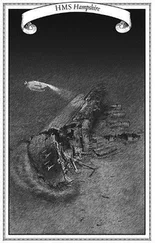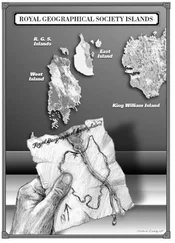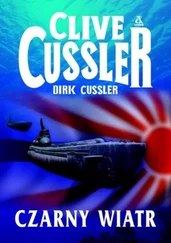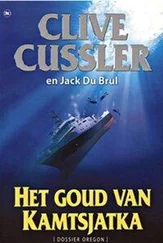“That red spot. That’s got to be a control unit or a pumping station. If we take it out, the rest of the pipeline is irrelevant.”
“You might be guessing here,” Yaeger warned.
“Now that we know where to look, I can easily get confirmation.” Rudi picked up the phone and dialed an internal extension. A voice answered on the first ring.
“Remote Sensing,” the voice said. “This is Lee.”
Lee Garland oversaw NUMA’s remote sensing and communications wing. Garland called himself a satellite wrangler because he was constantly repositioning any number of NUMA’s satellites, most of which were designed to scan the oceans or to act as secure communication relays.
“Lee, this is Rudi. How long would it take you to get a high-resolution pass of the Holtzman Glacier and the Fimbul Ice Shelf?”
“Fimbul?” Lee said.
“Correct,” Rudi said. “It’s a remote glacial area in Antarctica, not very well known. It’s on the opposite side of the continent from McMurdo and the Ross Ice Shelf.”
“Yeah,” Garland said with a strange tone to his voice. “I know where it is. Shouldn’t take long at all. We have a weather sat transitioning to a south polar orbit right now.”
“Weather sat?” Rudi repeated. “Why would you be moving one of those over the pole?”
“Haven’t you heard?” Garland replied. “There’s a huge storm brewing down there. They’re calling it Superstorm Jack. It’s going to sweep into the Southern Ocean tomorrow and bury half of Antarctica in a weeklong blizzard.”
“Which half?” Rudi asked.
“The half with the Holtzman Glacier and the Fimbul Ice Shelf on it.”
“Of course,” Rudi said. “Get that satellite pass done before the storm hits. I know those weather sats aren’t designed to pick up small targets on the ground. I need you to remedy that. Fine-tune the optics. Change the software. Give the damn thing a pair of glasses, if you have to. I need a clear image.”
“There are a few tricks I can use,” Garland told him.
“Good. Hiram will be sending you the coordinates we need scanned.”
“I’ll watch for them,” Garland said.
Rudi acknowledged and hung up, then offered Yaeger a grim look. “If Ryland’s plan is operational, or close to it, a week is an awful long time for him to be pumping microbes into the sea.”
Yaeger offered a counterpoint. “And if his plan isn’t up and running yet, the storm might delay him long enough for us to put more resources into play.”
Rudi shook his head. “Ryland’s operation is mostly underground. That storm isn’t going to have much effect on his plans.”
“Which makes this situation even more precarious,” Yaeger said.
Rudi agreed. “After you get those coordinates over to Lee, I’ll need you to build me a computer model simulating Ryland’s plan, his chances of success and the effect of us getting there a week late. Put everything we’ve learned in it.”
“To what end?”
“Superstorm Jack just made putting boots on the ground a lot more dangerous,” Rudi said. “If I’m going to order Kurt and his team to take the risk, I need to be sure it’s worth it.”
40
CHINESE FISHING TRAWLER
SEVEN HUNDRED MILES NORTH-NORTHWEST OF THE FIMBUL ICE SHELF
Kurt stood on the aft deck of the Chinese trawler, squinting into the spitting rain. Overcast skies and mist had cut the visibility to less than five miles, while heavy swells rolled in one after another.
Because of their size, the waves appeared to be moving in slow motion, building as they approached, lifting the trawler upward and then letting it down gently as they passed on by. Waves weren’t a concern at the moment. Kurt didn’t need a weather report to tell him things were going to get worse.
Hearing an approaching helicopter and then spotting its landing lights through gloom, Kurt stepped from his sheltered spot and moved out into the rain. He had a radio in one hand and a powerful flashlight in the other. He wore yellow rain gear from head to toe.
He called Joe on the radio. “Have you in sight, amigo. Hope you can see me. I’m waving a light and dressed up like the Gorton’s Fisherman.”
A scratchy transmission delivered Joe’s response. “Don’t worry, Kurt, we’ve got you on the FLIR and the UV channel. I can see you plain as day. What I don’t see is a helipad to land on. I’m assuming you have something up your sleeve. But you might want to share it because I have a couple nervous passengers up here.”
The Chinese trawler was a processing ship, which meant it was longer and larger than a standard trawler. But Joe was right, it didn’t come with a helipad.
“I’ve taken a blowtorch to the midships booms,” Kurt said. “We tossed all that gear over the side so you would have plenty of space to land. We’ve welded a few plates to the deck to keep things level.”
The helicopter descended through the clouds, closing in on the trawler and then easing up beside it in formation.
To the consternation of the Chinese captain, who remained aboard, Kurt, along with Zama and a few of his men, had cut away anything that might have interfered with the helicopter’s approach and landing. The result was a clean-looking ship, lighter and more stable, but with a few metal stumps sticking up here and there.
Flat steel plates and several layers of plywood had been welded to and hammered into the deck where the Jayhawk was supposed to touch down.
As Kurt stood by, waving the flashlight back and forth, the Jayhawk hovered beside the ship, riding the wind like a seagull.
Joe’s voice returned over the radio. He sounded more irritated than pleased. “Under normal conditions, I’d say no problem. But these are far from normal conditions.”
“I figured you might need a little help,” Kurt said. “I rigged up a bear trap for you. Drop the centerline down and I’ll reel you in.”
“Now you’re talking.”
In the pilot’s seat of the helicopter, Joe worked the controls like a virtuoso. His hands moved independently, seeming to do three or four things at once. He eased the helicopter sideways, fighting the swirling air currents and keeping the craft level as the trawler dropped and then rose back toward them.
In position over the ship, he looked downward through the clear footwells.
One moment the helicopter appeared to be steady and hovering eighty feet above the ship with its landing gear aligned evenly with the flat deck. Seconds later the trawler would be rolling into a trough, the deck tilting twenty degrees to horizon and the ship itself dropping away. Thirty seconds after that, the trawler would come rising back up, looking as if it were going to hit the Jayhawk and knock it out of the sky.
And while Joe was cool and calm, his passengers—who had no control over the situation—were close to terrified.
“I can’t watch,” Gamay said, looking around the cabin and then out into the distance.
“We’ll be all right,” Paul said. “Though I’m going to need a field dressing if you keep digging your nails into my arm like that.”
“Sorry,” she said, releasing him.
With Kurt flashing the light at him, Joe flipped a switch and dropped the Jayhawk’s centerline cable. It was weighted at the end and reeled outward with the force of gravity.
Down on the trawler, Kurt used a boat hook to grab the cable and then hauled it back toward the center of the landing zone. He threaded the cable underneath a steel bar and then dragged it toward a winch and hooked it in.
Pulling the radio out of his pocket, he notified Joe. “I have you locked in. Maintain a hover and I’ll pull you down.”
Читать дальше
